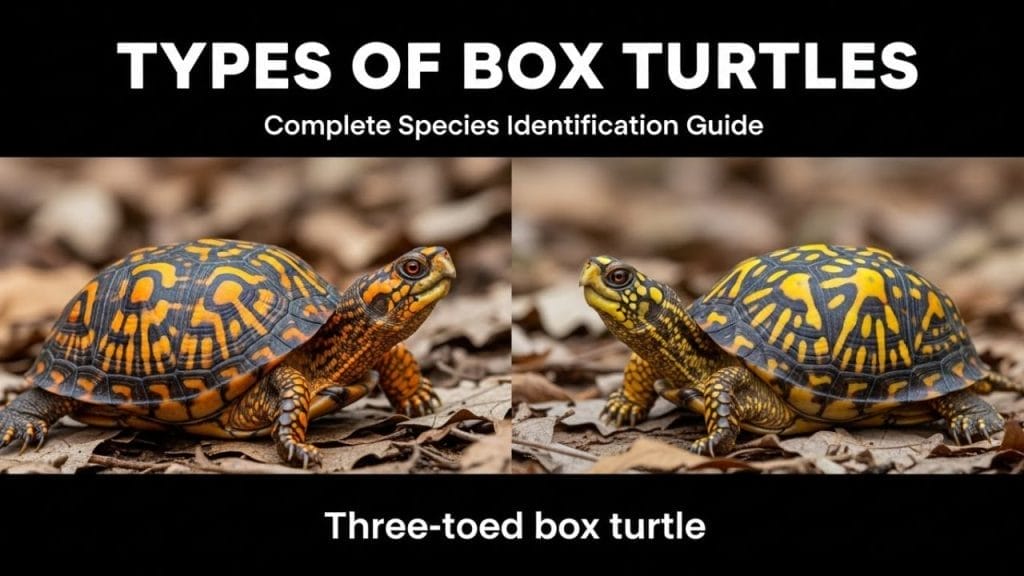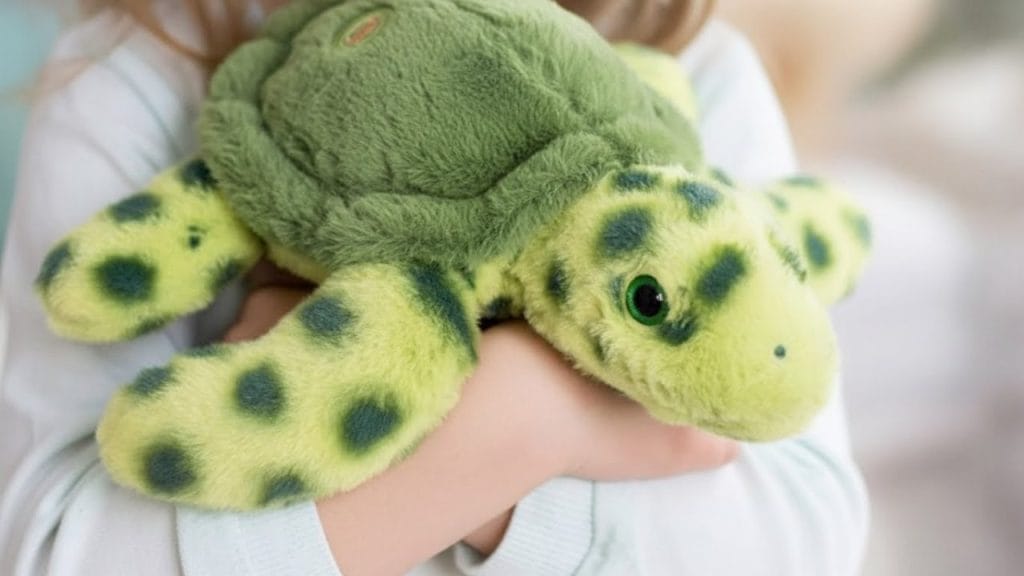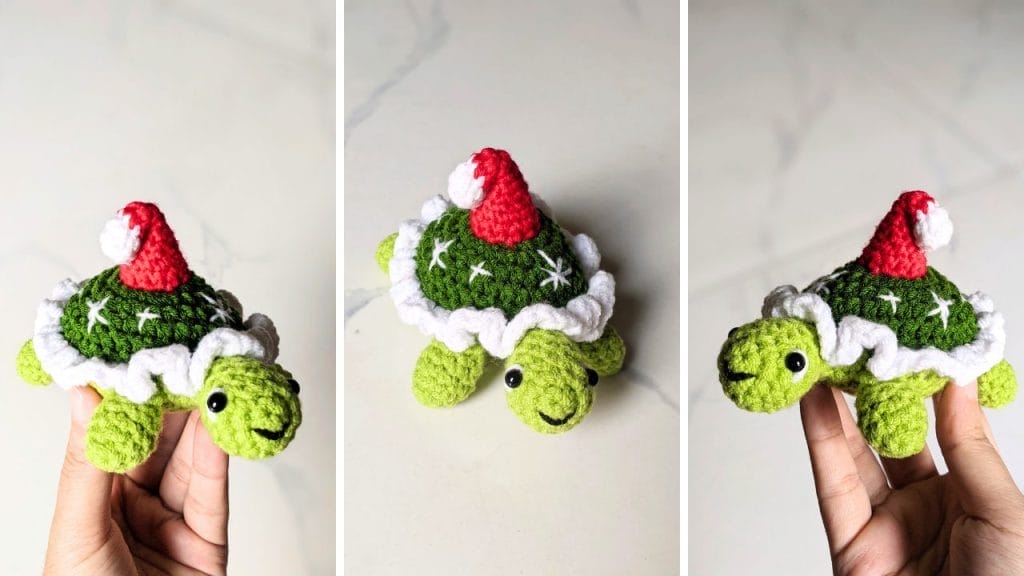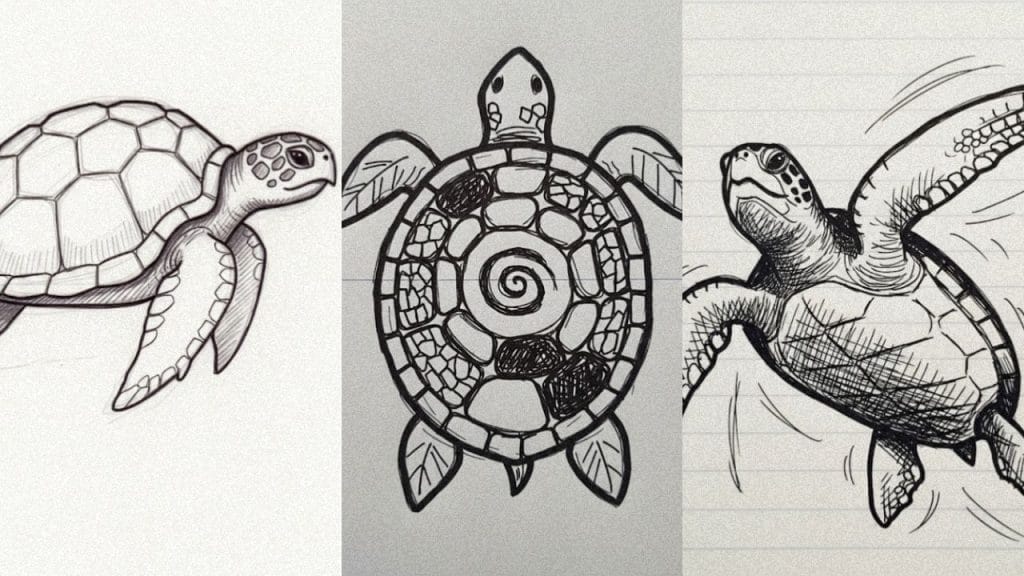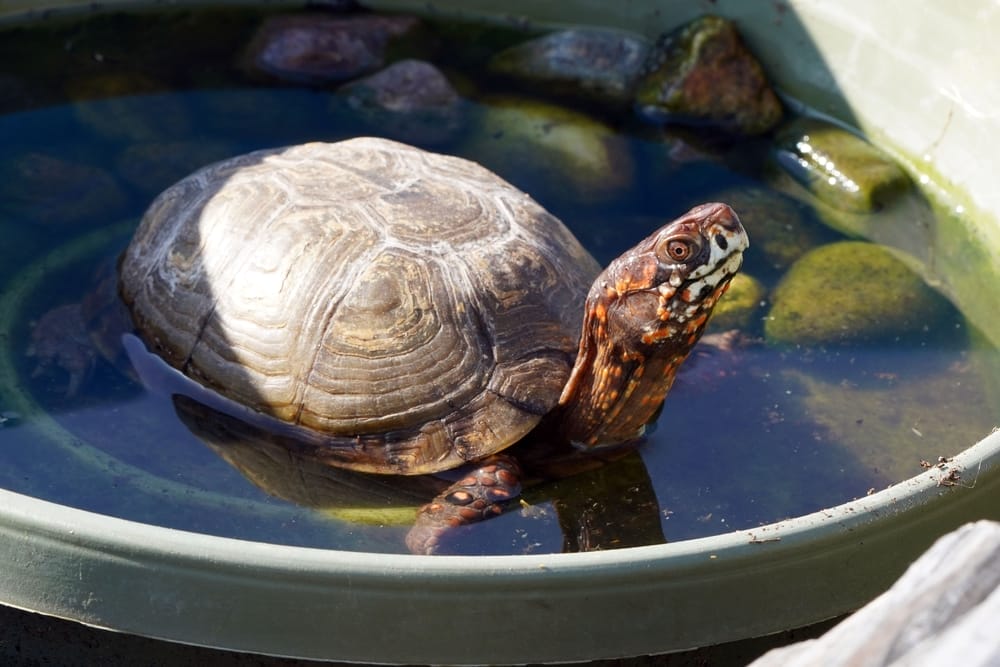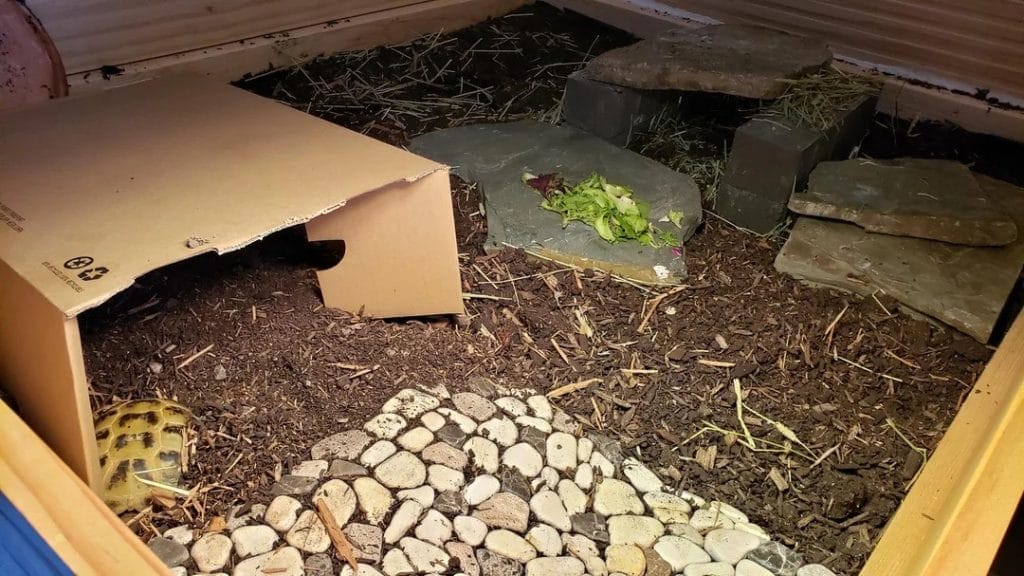How To Take Care Of A Red Eared Slider? [Beginner’s Guide 101]

This post was created with help from AI tools and carefully reviewed by a human (Muntaseer Rahman). For more on how we use AI on this site, check out our Editorial Policy.
So you just got a red-eared slider, or you’re thinking about getting one.
Maybe you saw that cute little hatchling at the pet store with the bright green shell and thought, “How hard could this be?”
Let me stop you right there.
Red-eared sliders are one of the most popular pet turtles in the world, and they’re also one of the most abandoned. Not because they’re mean or boring, but because people had no idea what they were signing up for.
These turtles can live 20-40 years (some even hit 60!), grow up to 12 inches long, and need a setup that costs way more than the $10 turtle itself.
But here’s the thing: if you do it right, red-eared sliders are fascinating, personable pets that’ll swim up to you begging for food like tiny aquatic puppies.
This guide will walk you through everything you need to know, from tank size to diet to what the heck brumation is (spoiler: it’s not hibernation).

Why Red-Eared Sliders Are NOT “Easy” Pets
Let’s get real for a second.
Red-eared sliders are hardy little survivors. They’ve become one of the world’s worst invasive species precisely because they’re so adaptable.
But hardy doesn’t mean easy.
These turtles are semi-aquatic, which means they need both water to swim in AND a dry basking spot. They’re messy eaters who poop in the same water they swim in. They need special UVB lighting that costs $40-50 and needs replacing every 6-12 months.
And that cute 2-inch baby? It’ll be 10-12 inches within a few years, needing a 120-gallon tank minimum.
If you’re still reading, good. You’re already more prepared than most people who impulse-buy these turtles.
Many of these challenges apply to all aquatic turtles—our article on top 10 turtle-keeping mistakes covers errors that affect beginners across all species.
Understanding Your Red-Eared Slider
What Makes Them “Red-Eared”?
It’s that distinctive red stripe behind each eye that looks like ears.
Fun fact: turtles DO have ears, they’re just covered by skin. And red-eared sliders have incredibly sensitive underwater hearing that scientists think they use to communicate with each other.
Pretty cool for an animal that looks like it’s constantly contemplating the meaning of existence.
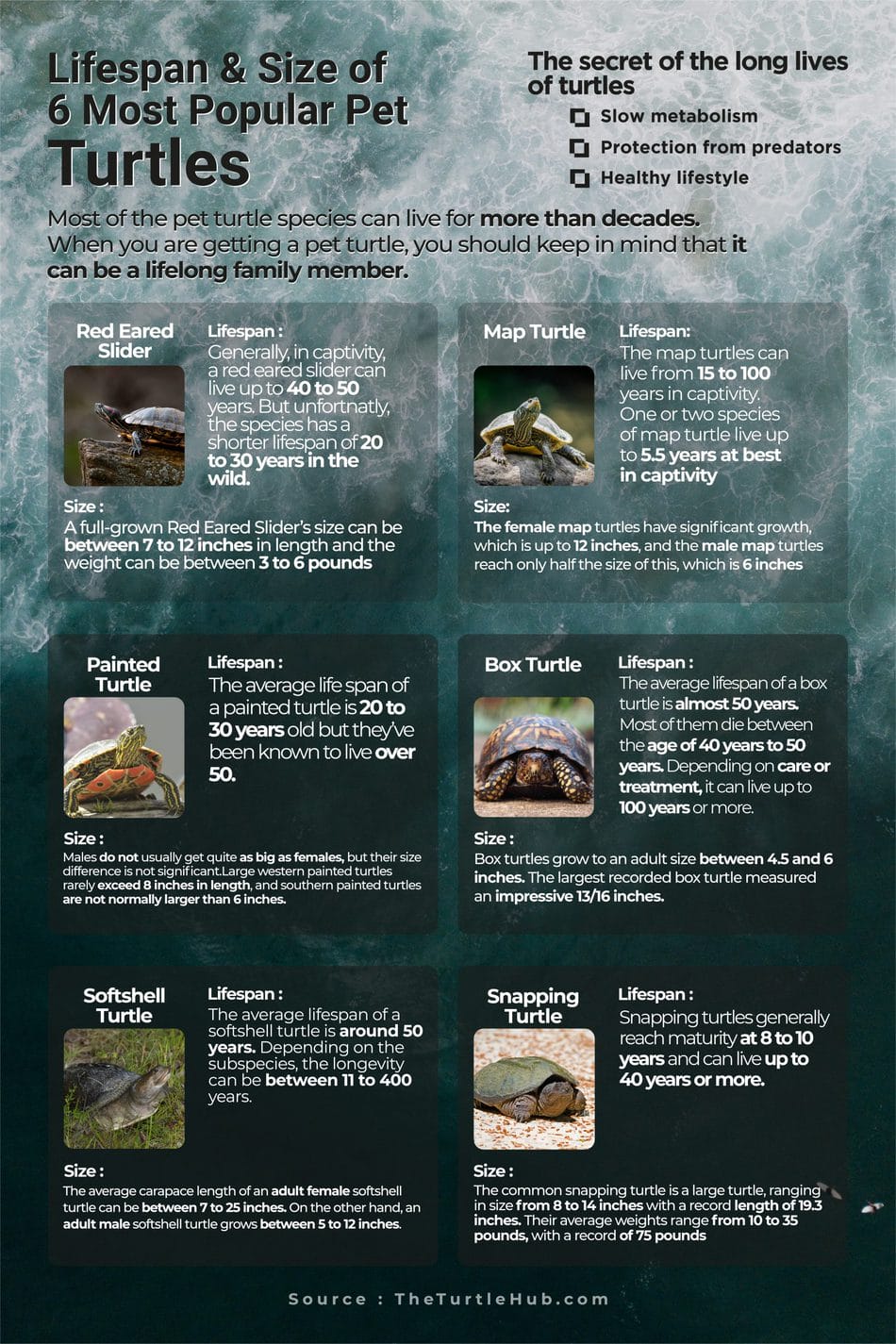
Size and Lifespan
Males typically grow to 8-10 inches, while females can hit 10-12 inches or larger.
With proper care, expect your turtle to live 20-30+ years. Some have been documented living into their 60s.
This is literally a longer commitment than most marriages.
Personality
Red-eared sliders are surprisingly personable for reptiles.
They’ll recognize you, swim to the front of the tank when you approach, and shamelessly beg for food. They’re active during the day (diurnal), spending time basking, swimming, and judging your life choices from their platform.
In the wild, they’ll actually stack on top of each other while basking, like a turtle pyramid of relaxation.
This Hilarious Turtle Book Might Know Your Pet Better Than You Do
Let’s be real—most turtle care guides feel like reading a textbook written by a sleep-deprived zookeeper.
This one’s not that.
Told from the snarky point of view of a grumpy, judgmental turtle, 21 Turtle Truths You’ll Never Read in a Care Guide is packed with sarcasm, sass, and surprisingly useful insights.
And hey—you don’t have to commit to the whole thing just yet.
Grab 2 free truths from the ebook and get a taste of what your turtle really thinks about your setup, your food choices, and that weird plastic palm tree.
It’s funny, it’s honest, and if you’ve ever owned a turtle who glares at you like you’re the problem—you’ll feel seen.
Tank Setup: The Expensive Part Nobody Warns You About
Tank Size Requirements
Here’s the rule that’ll make your wallet cry: 10 gallons of water per inch of shell length.
That baby turtle? Starts at 30-50 gallons minimum. A full-grown adult? You’re looking at 120-175 gallons of water capacity.
And before you ask: no, you can’t just buy a small tank and upgrade later. Well, you CAN, but you’ll spend way more money buying multiple tanks than just getting a big one from the start.

| Turtle Size | Minimum Water Volume | Recommended Tank |
|---|---|---|
| 2-4 inches (baby) | 30-40 gallons | 40-50 gallon tank |
| 5-7 inches (juvenile) | 50-70 gallons | 75 gallon tank |
| 8-12 inches (adult) | 120+ gallons | 125+ gallon tank or pond |
The tank should be LONG, not tall. Turtles swim horizontally, not vertically.
A 55-gallon tank that’s super tall but narrow? Useless. You want length and width for swimming space.
Water Depth
Water should be at least twice as deep as your turtle is long.
So a 5-inch turtle needs at least 10 inches of water depth. Deeper is better if you can manage it since in the wild these guys live in water that’s 10-20 feet deep.

Filtration: You Need a GOOD One
Red-eared sliders are disgusting.
They’re messy eaters, and they poop constantly. Your filter needs to be rated for TWICE the water volume of your tank because turtle tanks get way dirtier than fish tanks.
Canister filters work best. You’ll pay $100-200 for a good one, but it’s worth every penny when you’re not doing water changes every three days.
Even with a great filter, expect to do 25% water changes weekly.
Basking Area
Your turtle needs a completely DRY spot to climb out and bask.
This isn’t optional. Without proper basking, your turtle will develop shell rot, respiratory infections, and metabolic bone disease.
Options include:
- Commercial turtle docks (floating platforms)
- Stacked smooth rocks (NOT rough rocks that can scratch the shell)
- Cork bark pieces
- DIY platforms using egg crate and silicone
The basking area should let your turtle get completely dry and be easy to climb onto.

Lighting: Where Most People Mess Up
UVB Lighting is NOT Optional
This is where most people fail.
Red-eared sliders NEED UVB light to produce Vitamin D3, which helps them absorb calcium. Without it, they develop metabolic bone disease where their shells become soft and deformed.
Get a Zoo Med ReptiSun 5.0 or 10.0 T5 HO tube light. Not the compact bulbs, not some random brand, these specific ones.
Position it 10-14 inches above the basking spot. And here’s the kicker: UVB bulbs only work for 6-12 months even though the light still turns on.
Mark your calendar to replace them.
Heat Lamp
You need a separate heat lamp to create a basking temperature of 90-95°F.
A simple dome lamp with a 75-100 watt bulb usually works. Use a thermometer on the basking spot to check the actual temperature, don’t guess.
Lighting Schedule
Lights should be on for 10-12 hours per day.
Get a cheap timer from the hardware store. This mimics natural day/night cycles and keeps your turtle’s internal clock happy.
Water Conditions
Temperature
Water temperature should stay between 75-80°F for adults.
Baby turtles and sick turtles need it warmer, around 80-85°F.
Use a submersible aquarium heater. The Aqueon Pro series is bulletproof and turtles can’t bite through it.
Water Quality
Aged tap water works fine for red-eared sliders.
Fill a bucket, let it sit 24 hours, add it to the tank. Or use a water conditioner like API Tap Water Conditioner to remove chlorine immediately.
Never let the water temperature drop below 65°F for extended periods. Your turtle will stop eating and can develop respiratory infections.
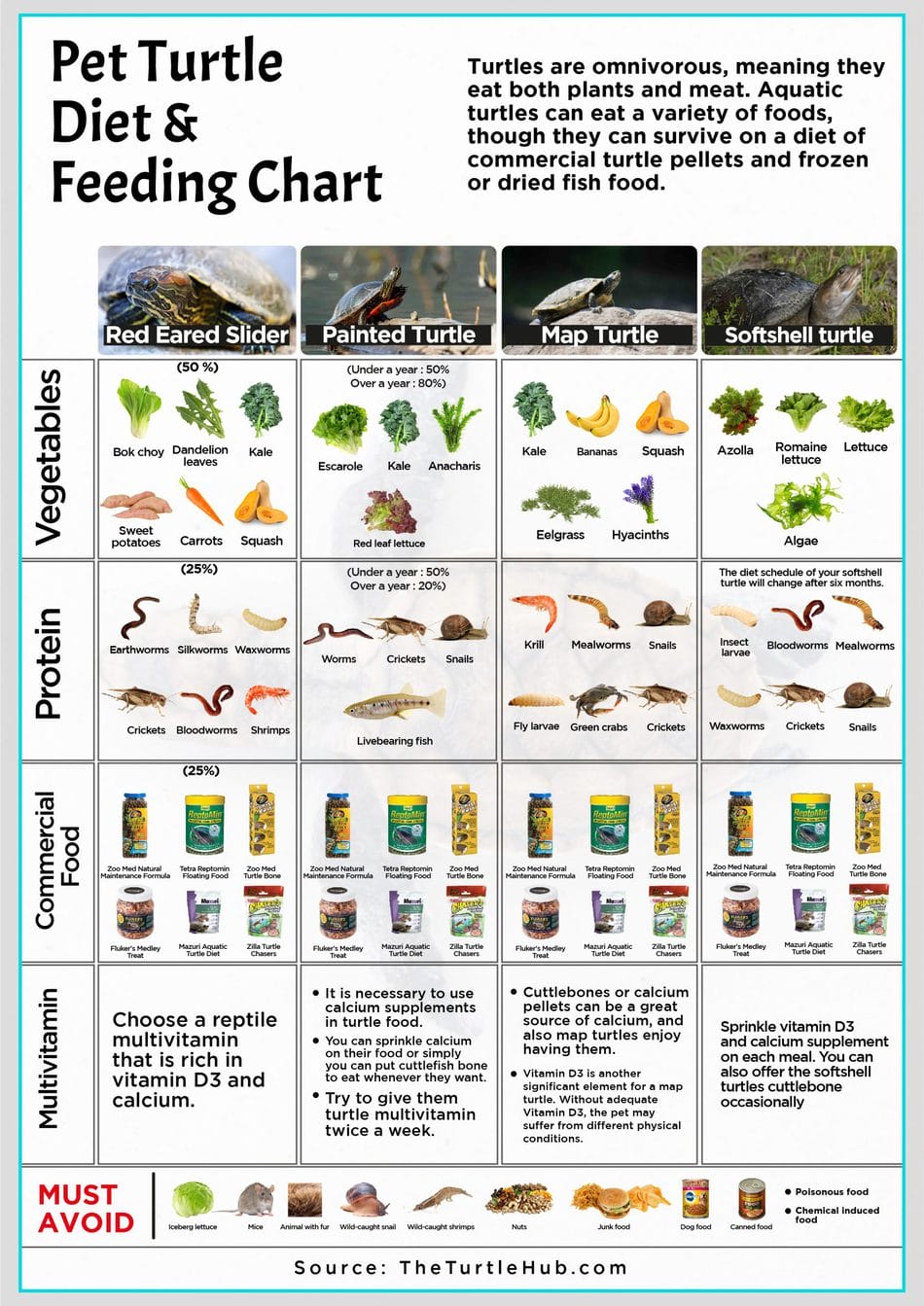
Diet: What to Feed Your Turtle
The Diet Changes With Age
Baby red-eared sliders are little carnivores who need protein to grow.
Adults flip the script and become mostly vegetarian.
| Age | Protein | Vegetables | Feeding Frequency |
|---|---|---|---|
| Hatchling/Baby (0-1 year) | 70% | 30% | Daily |
| Juvenile (1-3 years) | 50% | 50% | Daily |
| Adult (3+ years) | 25-30% | 70-75% | Every other day |
Good Protein Sources
- Commercial turtle pellets (should be 25% of diet) – brands like Mazuri and ReptoMin
- Live feeder fish – NOT frozen fish, they’re thiamine-deficient
- Earthworms – from reptile stores, not your yard (pesticides!)
- Crickets and mealworms
- Cooked chicken or lean beef (occasional treat only)
Vegetables and Greens
Dark, leafy greens are your turtle’s best friend:
- Collard greens
- Dandelion greens
- Mustard greens
- Red/green leaf lettuce (NOT iceberg – it’s basically crunchy water)
- Shredded carrots
- Squash
- Green beans
Avoid spinach, kale, and cabbage. They interfere with calcium absorption.
Treats and Supplements
Occasional treats include:
- Small pieces of fruit (berries, melon, apple)
- Freeze-dried shrimp
- Cantaloupe with rind (helps trim their beak naturally)
Add a reptile multivitamin supplement twice a week. Dust it on their food.

How Much to Feed
Feed only what your turtle can eat in 15-20 minutes.
Overfeeding leads to obesity and water quality problems. If there’s food floating around after feeding time, you’re giving too much.
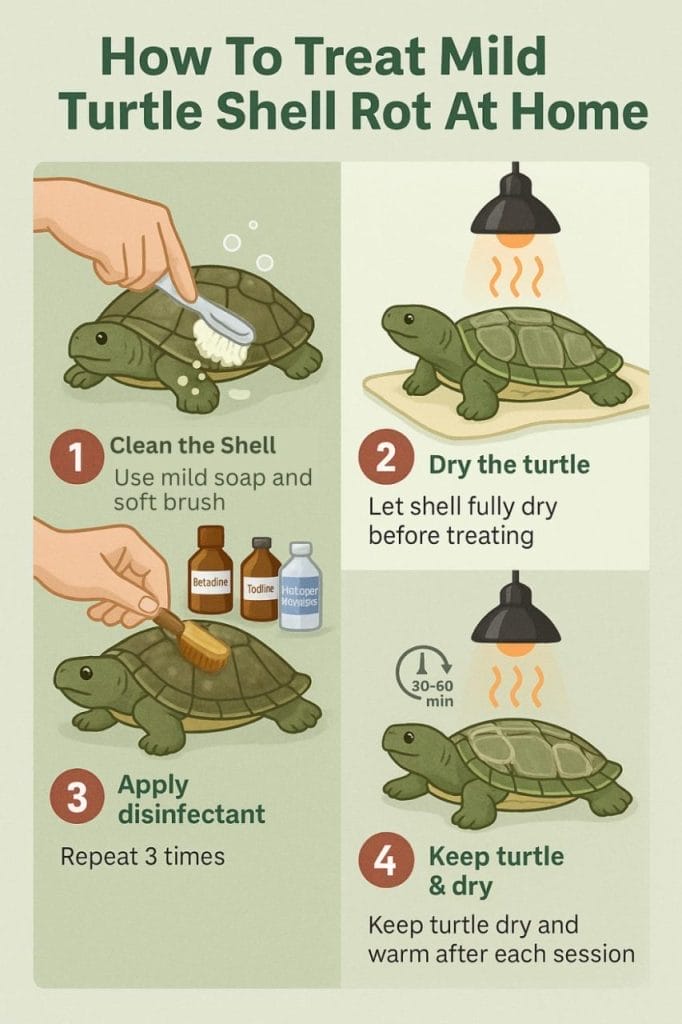
Health and Common Problems
Shell Rot
Looks like white, soft, or flaking patches on the shell.
Caused by bacteria or fungus from dirty water or lack of basking. Keep water clean and ensure proper basking to prevent it.
Respiratory Infections
Symptoms include bubbles from the nose, wheezing, floating at an angle, gaping mouth, and lethargy.
Usually caused by water that’s too cold. This is a vet emergency.
Metabolic Bone Disease (MBD)
Soft or pyramiding shell, swollen legs, weakness.
This happens when there’s not enough UVB lighting or dietary calcium. It’s preventable but hard to reverse once it happens.
Swollen Eyes
Often a Vitamin A deficiency.
Add more dark leafy greens to the diet and consider a vitamin supplement. See a vet if it doesn’t improve.
Intestinal Parasites
Common in wild-caught turtles.
Symptoms include weight loss, runny stool, and loss of appetite. A vet can test for and treat parasites.
Winter Care: Do Red-Eared Sliders Hibernate?
It’s Brumation, Not Hibernation
Red-eared sliders don’t hibernate like mammals do.
They brumate, which is the reptile version. The difference? During brumation, they occasionally wake up to breathe, drink water, or snack if the temperature warms up temporarily.
In the wild, they brumate at the bottom of ponds when temperatures drop below 50°F, staying mostly inactive from October through March.
Should Pet Turtles Brumate?
Most experts say NO for captive turtles, especially if you’re not breeding them.
Keep your tank temperatures consistent year-round (water 75-80°F, basking 90-95°F). Your turtle will stay active and healthy all winter.
Brumation is stressful and risky. Turtles can die during it, especially if they’re young, sick, or the conditions aren’t perfect.
What If My Turtle Slows Down in Winter?
If your house gets colder in winter, your turtle might become less active even with proper heating.
This is fine. Just make sure water temperatures don’t drop below 75°F. They might eat less, which is normal as long as temperatures stay consistent.
Baby Red-Eared Slider Care
Babies Need Extra Attention
Hatchlings are adorable and surprisingly delicate.
They need warmer water (80-85°F) and more frequent feeding (daily). Their immune systems aren’t fully developed, so water quality is even more critical.
Starting Tank Size
Minimum 30-gallon tank for a baby, but honestly, go bigger.
They grow FAST. Within two years, that tiny baby will need a 75+ gallon setup.
Hatchling Diet
Babies are carnivorous eating machines.
Feed high-quality turtle pellets daily, supplemented with small pieces of earthworm, tiny feeder fish, and occasional greens. They need that protein to fuel their growth.
UVB is CRITICAL for Babies
Young turtles are developing their shells and bones.
Without proper UVB, they’ll develop deformities that last their entire lives. Don’t skip this.
Winter poses special challenges for hatchlings—our dedicated guide on caring for baby turtles in winter covers cold-weather management in detail.

Handling Your Red-Eared Slider
Red-eared sliders tolerate handling but don’t really enjoy it like a dog would.
They can bite, and it hurts. Those sharp beaks can draw blood.
When you do handle them:
- Support the body fully, don’t dangle by the shell
- Wash your hands before and after (salmonella risk)
- Keep handling brief and infrequent
- Never grab them from above (predator trigger)
They’re best as display animals. Watch them swim, feed them, interact that way.
Setting Up Your First Tank: Step by Step
Step 1: Get the Tank
75-120+ gallon aquarium or large Waterland tub.
Make sure it’s on a sturdy stand that can handle 1000+ pounds of water weight. Never put this on an upper floor unless you want your downstairs neighbor swimming with your turtle.
Step 2: Install Filtration
Set up your canister filter rated for 2x your water volume.
Follow the manufacturer’s instructions for proper installation.
Step 3: Add Water Heater
Submersible heater set to 75-80°F.
Place it near the filter output for even heat distribution.
Step 4: Create Basking Area
Install your basking platform on one end of the tank.
Make sure it’s stable and your turtle can easily climb up.
Step 5: Set Up Lighting
Mount heat lamp over basking area for 90-95°F surface temperature.
Install UVB tube light 10-14 inches above the basking spot, spanning the basking area and some of the water.
Step 6: Add Decorations (Optional)
Smooth river rocks, aquatic plants, driftwood.
Keep it simple. Turtles will rearrange or destroy most decorations anyway.
Step 7: Cycle and Fill
Fill with dechlorinated water.
Let the filter run for a few days before adding your turtle to establish beneficial bacteria.
Step 8: Monitor Temperatures
Use thermometers to verify water and basking temperatures are in the correct ranges.
Adjust heater and lamp wattage as needed.
Common Beginner Mistakes
Buying a Tank That’s Too Small
That 10-gallon “turtle kit” at the pet store?
It’s garbage. Your turtle will outgrow it in six months and you’ll have wasted money.
No UVB Lighting
Thinking the window provides enough sunlight.
It doesn’t. Glass blocks UVB. You need an artificial UVB source.
Dirty Water
Skimping on filtration or water changes.
This leads to shell rot, eye infections, and respiratory problems. Clean water is non-negotiable.
Wrong Diet
Feeding only turtle pellets, or only lettuce, or whatever random thing the pet store person suggested.
Varied diet is key.
Keeping Multiple Turtles Together
Red-eared sliders can be aggressive and territorial.
Unless you have a MASSIVE tank or outdoor pond, stick to one turtle. They don’t get lonely.
Impulse Buying at Pet Stores
Seeing that cute baby and not researching the commitment first.
That’s how turtles end up released into local ponds (which is illegal and ecologically disastrous).
Cost Breakdown: What You’ll Actually Spend
Initial Setup Costs
- Tank/tub: $150-400
- Stand: $100-200
- Canister filter: $100-200
- Water heater: $30-50
- UVB fixture and bulb: $60-100
- Heat lamp and bulb: $20-40
- Basking platform: $20-50
- Thermometers: $15-30
- Water conditioner: $10-20
- Initial food supply: $20-40
Total initial investment: $525-1,130
And that’s for a moderately-sized setup. Go bigger and costs go up.
Ongoing Monthly Costs
- Electricity (heating, filtration, lighting): $20-40/month
- Food: $15-30/month
- Filter media: $10-15/month
- Water conditioner: $5/month
Ongoing: $50-90/month
Annual Costs
- UVB bulb replacement (2x/year): $80-100
- Heat bulb replacements: $20-30
- Vet checkup: $50-150
Yeah. Not cheap.

Alternatives: Outdoor Ponds
If you live in a warm climate, an outdoor pond is the BEST way to keep red-eared sliders.
They get natural sunlight (free UVB!), way more space to swim, and a more naturalistic environment.
Requirements
- Climate that stays above 50°F year-round, OR ability to bring turtles inside for winter
- Pond at least 6 feet deep so it doesn’t freeze solid
- Predator-proof fencing (raccoons LOVE turtle snacks)
- Escape-proof walls (turtles are surprisingly good climbers)
- Basking areas with direct sunlight
Outdoor ponds are more work to set up but way easier to maintain long-term.
For species better suited to outdoor living, consider painted turtles, which are more cold-tolerant and thrive in naturalistic pond setups.
Legal Stuff You Should Know
The 4-Inch Law
In the US, it’s illegal for pet stores to sell turtles with shells under 4 inches.
This law exists because kids were getting salmonella from baby turtles. Hobbyist-to-hobbyist sales are fine, but commercial sales are banned.
Don’t Release Pet Turtles
Red-eared sliders are invasive in most places they’re not native.
Releasing your pet turtle into the wild is illegal, harmful to local ecosystems, and cruel to your turtle who probably won’t survive.
If you can’t keep your turtle, surrender it to a rescue or find it a new home through classifieds.
Adoption Over Buying
Here’s a sad truth: there are thousands of unwanted red-eared sliders in rescues and classifieds.
People buy the cute baby, realize it’s expensive and high-maintenance, and dump it.
Before you buy from a pet store, check:
- Local reptile rescues
- Craigslist and Facebook Marketplace
- Turtle rehoming groups
You can often adopt an adult turtle with a full setup included for free or cheap. Plus, you’ll know exactly how big it is and won’t have to upgrade tanks.
Signs You Should NOT Get a Red-Eared Slider
Be honest with yourself. Don’t get a red-eared slider if:
- You’re not willing to spend $500+ on the initial setup
- You don’t have space for a 120+ gallon tank eventually
- You want a cuddly pet (get a dog)
- You’re not home enough to do weekly maintenance
- You’re getting it for a young child (they need adult care)
- You might move frequently (massive tanks are hard to move)
- You’re not committed to 20-40 years of care
There’s no shame in realizing this isn’t the right pet for you. Better to figure that out BEFORE you get the turtle.
The Reality Check
Red-eared sliders aren’t starter pets.
They’re not low-maintenance. They’re not cheap. They’re not for kids.
But if you have the space, the budget, and the commitment, they’re incredible animals.
Watching them glide through the water, stack on their basking platform, or swim over for feeding time is genuinely cool. They have personalities. They recognize you. They live for decades.
Just know what you’re getting into first.
Final Thoughts
Taking care of a red-eared slider properly isn’t rocket science, but it does require commitment.
The initial setup is expensive and time-consuming. The ongoing maintenance is real work. The lifespan means this is a multi-decade commitment.
But do it right, and you’ve got a fascinating pet that’ll be part of your life for years to come.
So before you bring home that little green turtle with the red ear stripes, make sure you’re ready for the responsibility. Your future turtle (and your wallet) will thank you.
Got questions about red-eared slider care? Drop them in the comments. Already have a slider? Share your setup tips below.

About Author
Muntaseer Rahman started keeping pet turtles back in 2013. He also owns the largest Turtle & Tortoise Facebook community in Bangladesh. These days he is mostly active on Facebook.


